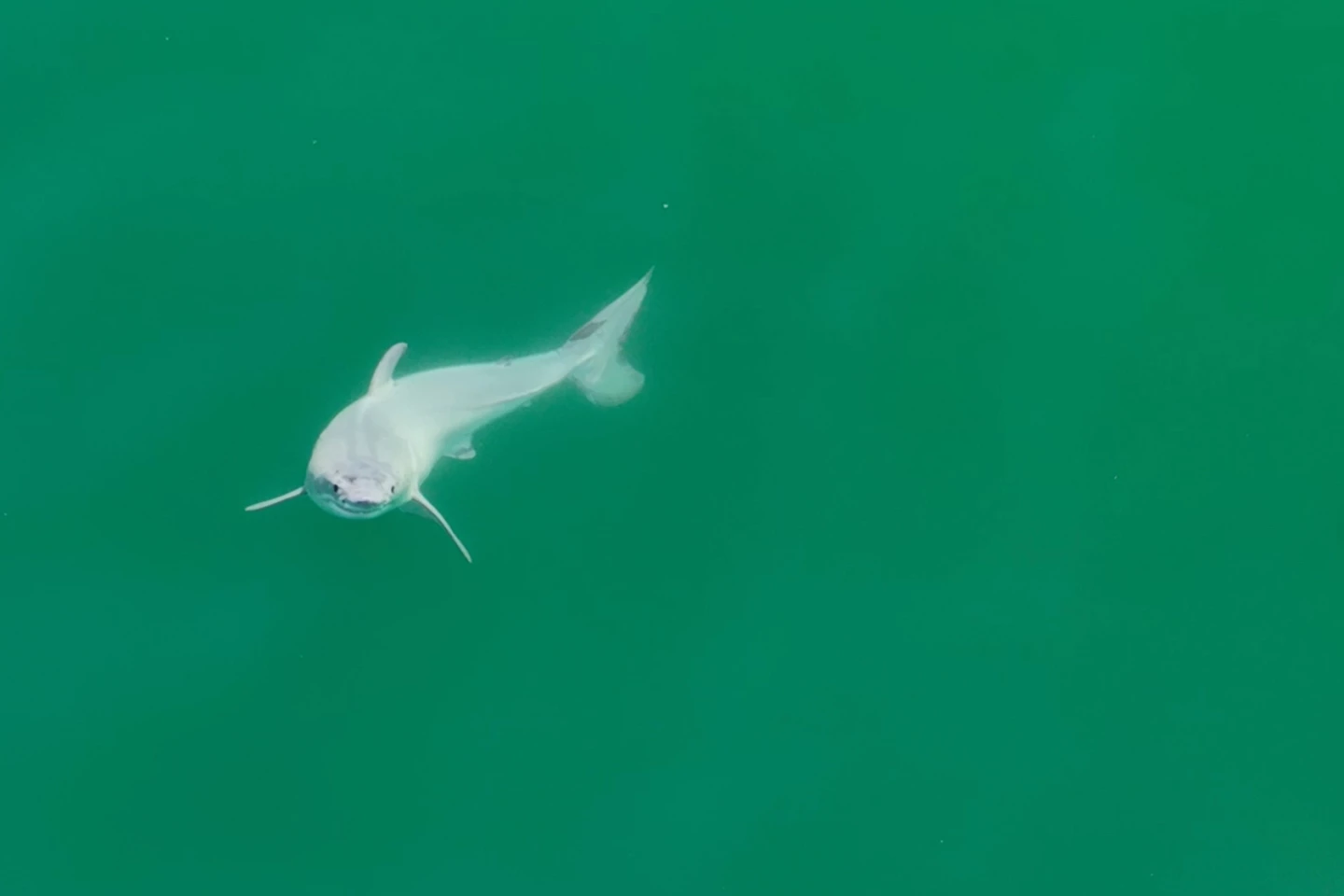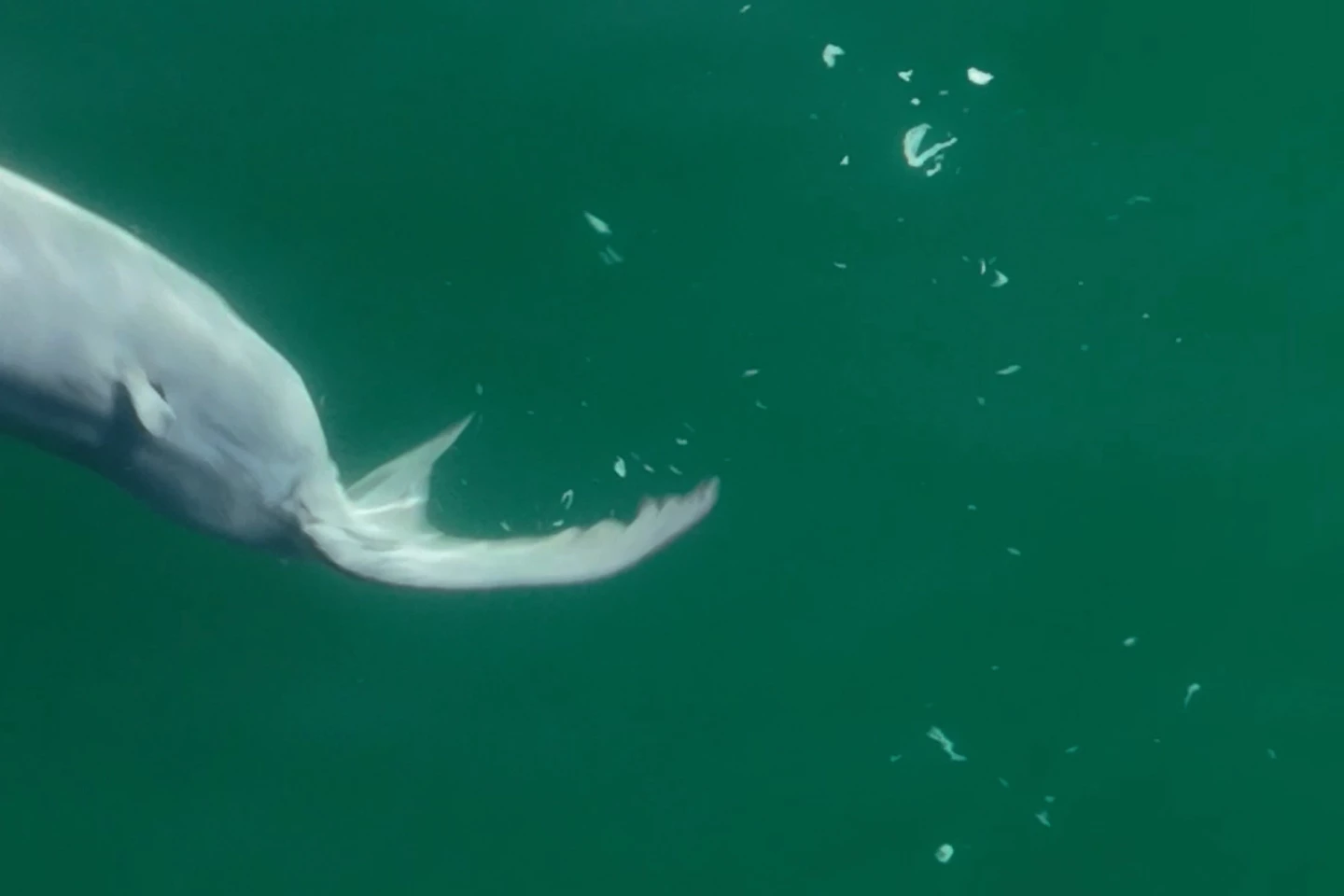Hard though it may be to believe, there has apparently never been a confirmed sighting of a live newborn great white shark. Such may no longer be the case, however, thanks to recently analyzed aerial drone footage shot in California.
The video was recorded by wildlife film-maker Carlos Gauna in July of 2023, about 1,000 feet (305 m) off the shore near Santa Barbara. At the time, Guana and University of California Riverside biology doctoral student Phillip Sternes were scanning the area for sharks.
The shark pup in question appears to be only about 5 feet (1.5 m) long, and has a relatively thin body shape. By contrast, adult great whites grow to an average length of up to 16 ft (4.9 m), and tend to have thicker bodies. Additionally, whereas mature great whites are gray on top and white on the bottom, this individual was completely white(ish).

That said, when the footage was slowed down and zoomed-in, it was found that the shark was shedding an outer layer of that white coloration as it was swimming. Sternes believes the material was a residual embryonic membrane composed of a nutrient-rich "milk" that the mother secreted in the uterus before the pup was live-born.
Although it is possible that the young shark may simply have had a skin condition, the researchers think this is unlikely.
"I filmed three very large sharks that appeared pregnant at this specific location in the days prior," said Gauna. "On this day, one of them dove down, and not long afterwards, this fully white shark appears. It’s not a stretch to deduce where the baby came from."

Indeed, the area was already suspected of being a birthing area for great whites. It is hoped that if the video does prove this to be the case, the region will merit increased protection by local authorities.
"There are a lot of hypothetical areas, but despite intense interest in these sharks, no one’s seen a birth or a newborn pup in the wild," Sternes said. "This may well be the first evidence we have of a pup in the wild, making this a definitive birthing location."
A paper on the research was recently published in the journal Environmental Biology of Fishes.






